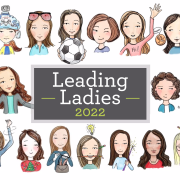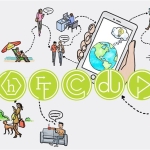The 4Cs Mindset Model: Finding Signals Through the Noise
The evolving new normal brings a range of unfamiliar, hard to describe feelings. These feelings often seem noisy and confusing. And this noise often leads to frustration as a result of having feelings that can’t be explained.
I’ve been fortunate. With expert colleagues, academic resources, my education and professional experiences (and, of course, my live-in clinical psychologist/wife), it seems like I’m never far from a model—a simple, insightful way of describing and explaining feelings and behaviors.
I’ve been thinking about the archive of frameworks that have brought me clarity in the past and I’d like to share one that has been helping me navigate these times. I hope it may help you, too, even if only as a thought-starter. If you’re reading this and noodling in similar ways, I also hope you’ll offer your own perspectives.
First, some quick background. Early in my career at Seed, I helped a healthcare innovation team decode a complex set of behaviors and feelings. We found a group of people who were reluctant to seek help for a very common (and unpleasant) condition. We found people afraid to admit they had symptoms. We found others who would try anything to find relief. The model that helped me find a signal in this noisy context was the Transtheoretical Model of Behavior Change (Prochaska & Di Clemente, 1983).
Prochaska and his colleagues found that when faced with a behavior change that could benefit our health, we move through a consistent set of mindsets. Often, we resist, then consider, prepare, act… and either maintain the new behavior or relapse to the old.
The specific signal we sought was effective ways to communicate the safety, efficacy and benefits of the portfolio of innovations we were developing. We found it immensely helpful to identify the healthcare mindsets of the people we aimed to help. The message for someone unaware that help was available looked a lot different than the message for someone who had tried many solutions and had given up. And the relevant communication for someone who felt they were alone in their experience of the condition was different still.
With Prochaska as inspiration, I developed a complementary model: the 4Cs Mindset Model. This model encompasses 4Cs we all seek at some time or another: Coping, Control, Comfort and Community.
I realized a few things in that project that helped decode 4Cs Mindsets in many subsequent projects. We don’t move through those mindsets in a predictable or linear sequence. And simply being aware of, labeling and acknowledging your mindset brings clarity and reassurance; whatever noisy feeling you’re experiencing––on whatever journey you’re on––it’s completely normal (and you’re not alone).
Lately, the 4Cs Mindset Model helps me find signals amidst the noisy feelings of today’s pandemic. It’s normal to experience different mindsets on different days and in different contexts. We’re all coping with a massive lifestyle change. Some are coping with real loss. Some days, I’m striving for control wherever I can find it, compartmentalizing my schedule, tidying something up, engineering my grocery order with an illusion of personal mastery over the system. We all feel days where extra comfort or self-care is the goal. Other days, we want nothing more than to connect and to recapture a feeling of community.
And some days we flip from mindset to mindset all day long. That feels noisy. Again, that’s perfectly normal (and you’re not alone)! The mindsets are impermanent. And they’re imperfect. No single mindset is the correct goal or motivation. For me, being aware of which mindset I’m in and giving myself permission to be in it and move to a different mindset when I’m ready, provides some peace.
I know some of you reading this are marketers, innovators and researchers. You’re feeling these same things. The people for whom you create and innovate are feeling these things, too. I hope these mindsets help you. I hope the mindsets may also lead some to reflect on how their teams, organizations and brands can show empathy and truly help in relevant, meaningful ways.
Here are some questions that might help get you started.
-How will brands communicate and innovate to help people in each of the mindsets?
-What mindset characterizes the people who seek or reject your brand?
-How are mindsets shifting when “availability” supersedes previous brand loyalties?
-If coping and control are the current norm, how will we know when higher order emotional benefits once again match the mindset where most people are?
-Try building a matrix; explore groups of people at interesting intersections. What does your brand do for them? What messages used to resonate? What messages no longer resonate? For example, someone for whom “we’re all in this together” is a salient community message, wants to know different things about brands and products than someone whose current mindset is characterized by a struggle to cope.
A mindset model like the 4Cs is only one lens through which we can look for signals among the noise. I’m curious to hear about and learn more models or frameworks that help you organize your own feelings and behaviors… and those of the people you aim to serve.
Corey Beilstein is SVP, Behavior and Research Design at Seed Strategy. He blends research technologies with his background in behavioral sciences and cognitive psychology to decode consumers and unlock breakthrough insights.
Edited by Adam Siegel. In addition to being the Editor of The Accelerator, Adam is VP, Creative at Seed Strategy where he draws upon his diverse experience in advertising, research and innovation to craft breakthrough creative and winning concept copy.
Connect with us! Follow Seed Strategy on our LinkedIn, Twitter, Facebook and Instagram pages.






